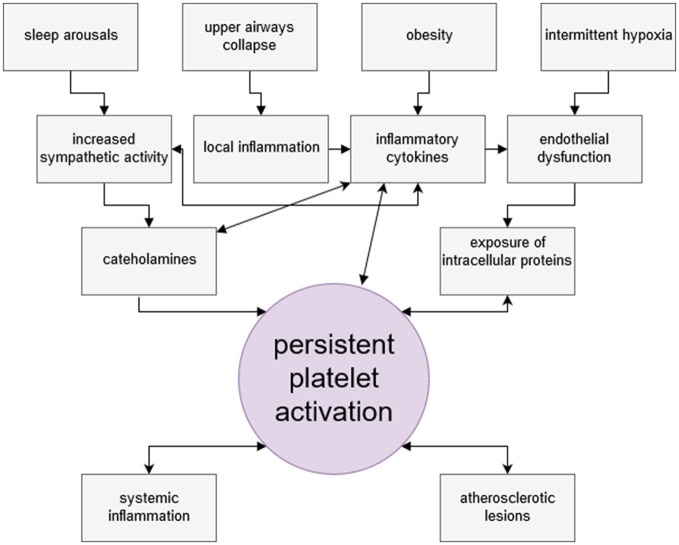Figure 2.
Factors leading to persistent platelet activation among obstructive sleep apnea patients. Platelets of OSA patients present thrombogenic phenotype and are hyperreactive. Among various intertwining factors leading to persistent platelet activation, four are considered as most important. Deprivation of sleep rhythm and nocturnal arousals result in increased sympathetic activity in OSA patients, manifested by elevated levels of circulating catecholamines. Noradrenaline is a potent direct platelet activator. Recurrent hypoxia events cause endothelial damage and presentation of molecules otherwise unexposed to platelets. OSA patients are characteristically obese and obesity entails the increase of the level inflammatory mediators and PAI-1 in circulation. Obesity is linked with susceptibility to upper airway collapse, which by causing mechanical irritation, contributes to sustaining inflammatory milieu. Circulating inflammatory cytokines may activate platelets, and PAI-1 inhibits antithrombotic serum activity. In turn, activated platelet secrete a plethora of bioactive, proinflammatory substances themselves. Through interaction with LDL receptor, activated platelets contribute to lipid peroxidation and, consequently, oxidative stress. Platelets are early effector cells of atherosclerosis. Persistent platelet activation may lead to serious thrombotic complications.

